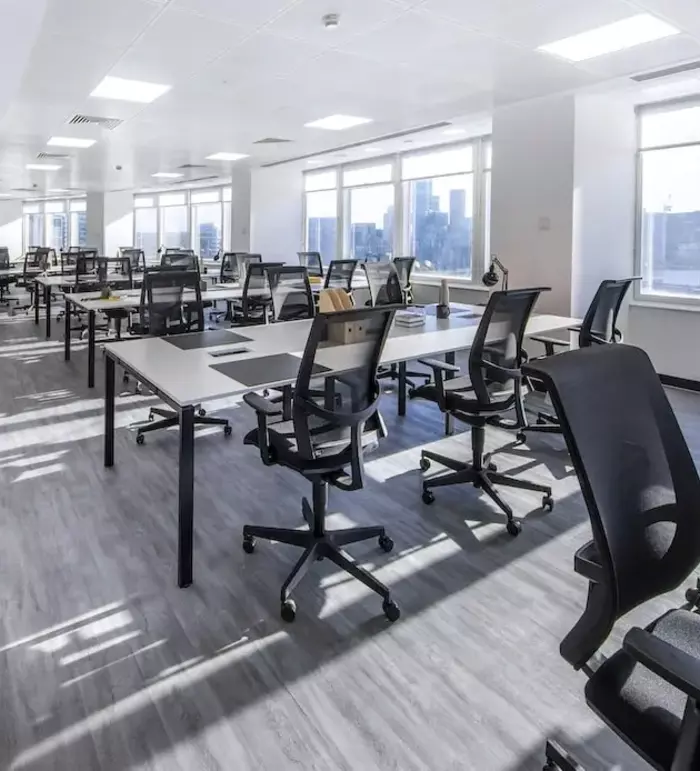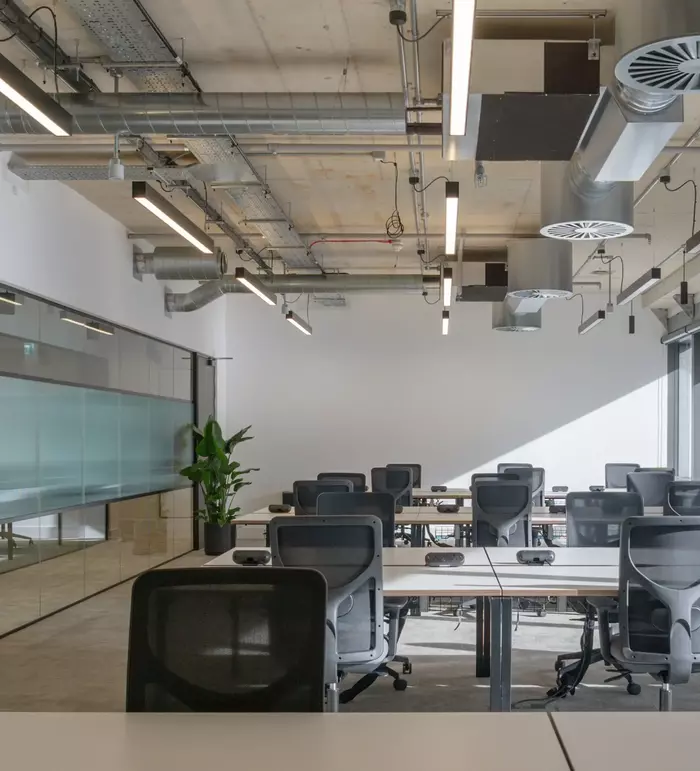Moving into a new office space is an exciting milestone for any business, whether you're expanding, downsizing, or simply looking for a more modern or efficient workspace better suited to your needs.
As always with key business decisions, a successful office move requires careful planning to minimise disruption, ensure a seamless decision, and make sure you find the right office space for you.
In this guide, we'll run through some of the most important things to keep in mind when moving office, from costs to an office move checklist to the benefits of different types of office space.
If you want to learn more about how to execute the perfect office relocation, don't hesitate to contact us.
Things to Consider Ahead of Office Relocation
Before you get into the specifics of your office relocation, it's important to do some basic pre-planning, considering your business's needs, your plans for growth, and what type of office space you need.
Understand your business needs
As always when making a key business decision, you should consider the particular needs of your organisation.
Ask yourself:
- How much office space do we need? Consider not just your current workforce but your plans for future expansion or downsizing
- What type of office setup best suits our work culture? Some teams thrive in open plan coworking spaces, while others will need setups focusing on private offices - make sure you choose the right space for you
- Do we need a flexible lease? If you're a startup or a medium-sized company in a growth phase, the sort of short-term agreements common to flexible office spaces might be a perfect fit
Choose the right type of office space
Choosing what sort of workspace you want to use is a crucial part of any office relocation - and picking the right one will depend on your business model, budget, and work style.
Flexible office space options include:
- Serviced office space: A fully furnished, ready to use space, perfect for companies that want to avoid setup costs and prize speed and agility
- Managed office space: Better options for customisation in design and decor than you'd find in a serviced office, but with admin, maintenance, and utilities handled by the provider
- Coworking and shared workspaces: Great for freelancers, remote workers, and small teams looking for cost-effective short-term solutions with excellent networking opportunities
Pay attention to location and accessibility
Famously one of the most important things to consider in any real estate decision, 'location, location, location' applies just as much to offices as it does to everything else.
Key factors to consider include:
- Public transport and parking availability for staff and visitors
- Local amenities such as cafes, banks, and gyms, for employee convenience
- Proximity to clients and others in the sector to maintain business relationships
Top tip: Remember to keep in mind the needs of the various different constituencies that make up your business. An ideal location will work for not just workers, but potential clients and partners as well.
Look to where others in your industry or sector make their homes to help you choose.
Know your IT and infrastructure requirements
Technology is a key part of any modern business, and it plays a crucial role in any smooth office relocation as well.
Make sure to plan for:
- Internet and phone line installation at the new location
- Secure data migration and backup
- Efficient setup of workstations and meeting rooms
Top tip: Continuity of service and communication should be the goal when moving office - ideally, your clients will barely notice the shift.
The speed of setup offered in serviced offices, where all infrastructure and utilities are handled by the office provider, can make them an ideal solution from this point of view.
Office Move Checklist
Once you've made the decision to move office, it's time to start the countdown to move-in day.
At this point, it's a good idea to set up a timeline. While it's important to remain flexible, having an idea of which boxes you need to tick and when will help make sure you make your office relocation as smooth as possible.
3-6 months before the move
- Define your office space requirements
- Set a realistic moving office budget
- Research and shortlist potential office locations
- Review and negotiate lease terms
- Appoint an internal moving team or coordinator
- Inform internal and external stakeholders of the move
2-3 months before the move
- Hire a professional moving company
- Sort IT and other infrastructure setup in the new office
- Organise legal and compliance documentation
1 month before the move
- Finalise furniture, equipment, utilities, and other setup
- Create a seating plan and assign workstations
- Begin packing non-essential items
Moving week
- Pack all items
- Label and organise all boxes
- Ensure IT and other key systems are operational in your new office space
Office Relocation Costs
There are a range of different sources of costs that can come with an office relocation, so it's crucial to understand what they are and to plan accordingly.
Rent and lease costs
The first and most obvious type of office relocation cost is the cost of renting the new office space.
Note that the varying price structures of different lease types can change how these costs work out:
- Flexible office solutions and coworking spaces keep costs predictable with short-term all-inclusive leases
- Serviced offices provide a similar all-in-one solution, but may have higher monthly fees
- Managed offices may have higher total costs in exchange for individual customisation options
Moving and setup expenses
The physical move between offices can be another source of costs, with expenses including:
- Professional movers and other transportation fees
- IT setup and equipment installation
- New furniture and decor, if needed
Hidden and unexpected costs
Finally, you should make sure to keep an eye out for any unexpected costs.
Examples include:
- Penalties for breaking a lease early (more common in traditional office leases)
- Any business interruption or downtime during the transition
- Opportunity costs due to time and effort spent on executing an office relocation
Simplified Office Relocation with Flexioffices
We hope you've found this guide to office relocation insightful and helpful. There's a wide world of London office space out there, and we at Flexioffices are on hand to help you navigate it in the way that's right for you.
From our office space calculator to our over 800 managed offices and over 5,000 serviced offices, we're sure to have what you need to make your next office relocation the perfect one for your business.
















